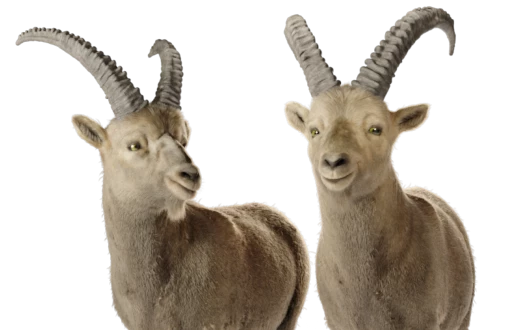Splinter stones that become projectiles. Boulders that jump up to 20 metres high. The headlines on the landslide in Brienz were explosive. And many people asked themselves: How can we protect ourselves from natural hazards? But how can we also ensure that nature remains as intact as possible despite climate change and human intervention?
Ultimately, the small village in Grisons got off lightly. Nevertheless, nature has impressively demonstrated that it has a mind of its own and is permanently in flux. Thanks to ongoing research, however, scientists are able to predict many natural phenomena and hazards and take appropriate practical approaches to solving them at an early stage. On the one hand, this is about protecting people themselves and, on the other hand, it is above all about protecting nature.
In 2022 Swiss glaciers lost around three cubic kilometres of ice – a record that makes you think. And makes you think even more. Climate change and ever-increasing average temperatures are affecting the frosty element. That is why a focus at the CERC research centre in Davos is permafrost. It is the natural cement that holds mountains and rocks together. When it thaws, rockfalls and debris flows occur, which has a major impact on the alpine infrastructure. Mountain railways, the infrastructure on mountains and the protection of villages as well as access routes must be designed and adapted accordingly. The CERC Institute, which is WSL Institute for Snow and Avalanche Research SLF part of the project, therefore constantly monitors the situation in the alpine regions in Grisons and, based on this, plans the necessary measures and precautions in order to act at an early stage, as in Brienz, and also to make appropriate forecasts with regard to avalanches. Digitalisation has also made research easier for (aspiring) scientists in Grisons and facilitated new collaborations.
Glaciers can and may recover
The University of Applied Sciences of the Grisons is also addressing the subject of glacier research and offers bachelor’s degree programmes in architecture and civil engineering at the Institute for Construction in Alpine Regions (IBAR). In addition to the classical basics, the focus is primarily on the question of which special building solutions are important in the alpine region. It is all about working on the mountain, but also with the mountain. In the research field of Applied Glaciology, students examine in detail the preservation of glacier substance, among other things. The influence of solar radiation on the Earth’s climate has been researched at the Physical Meteorological Observatory and World Radiation Center (PMOD/WRC) since 1907 – and it is not just about global warming. The instruments developed in this context are for use in space, but also on the ground.
The feasibility study on the MortAlive glacier maintenance project shows visionary perspectives. However, pragmatic but complex measures are already being implemented in Grisons today. For example, the effective option of protecting parts of glaciers from the sun with textile tarpaulins is used in various places. This gives the mountain a chance to recover in the core and build up new ice.
Together for the sake of nature
The Centre for Applied Glaciology (ZAG) is also concerned with glacier management and construction and planning in the alpine region, and relies on the support of the Academia Engiadina and the University of Applied Sciences of the Grisons. Other projects, initiated by Grisons institutions, make the seasons their partners. For example, a project launched in 2019 in the Corvatsch ski region near Silvaplana conducts meltwater recycling. For example, if the melt water from a glacier that accumulates in summer were collected as high up as possible, it could be recycled in the form of snow in winter and returned to the glacier. This could delay glacier melt. The long-term goal here, too: a constant rebuilding of the glacier in order to maintain the glacier in its current form.
Join in
Grisons has been one of the leading cantons in Switzerland for years when it comes to researching the world of the mountains. Therefore, there is a correspondingly wide range of offers for training and further education in this field.

